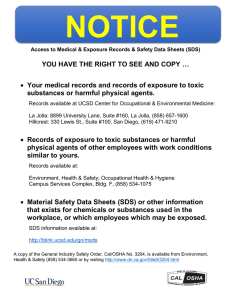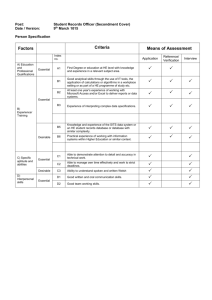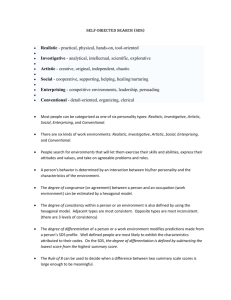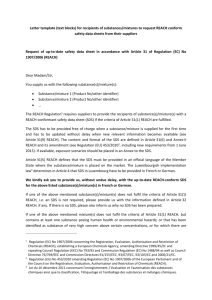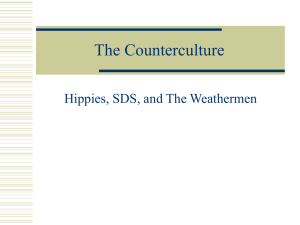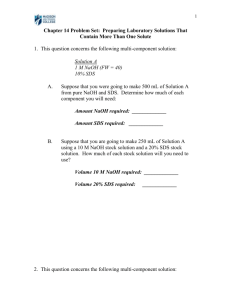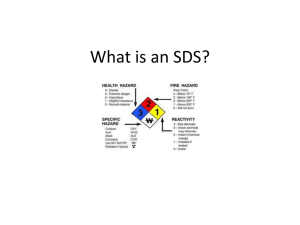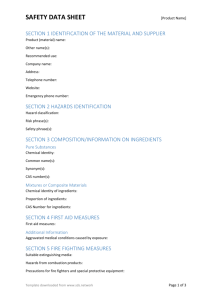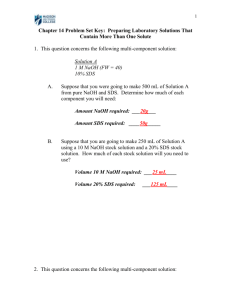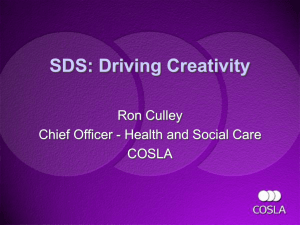Safety Data Sheets (Procedure for the Use and Management of)
advertisement
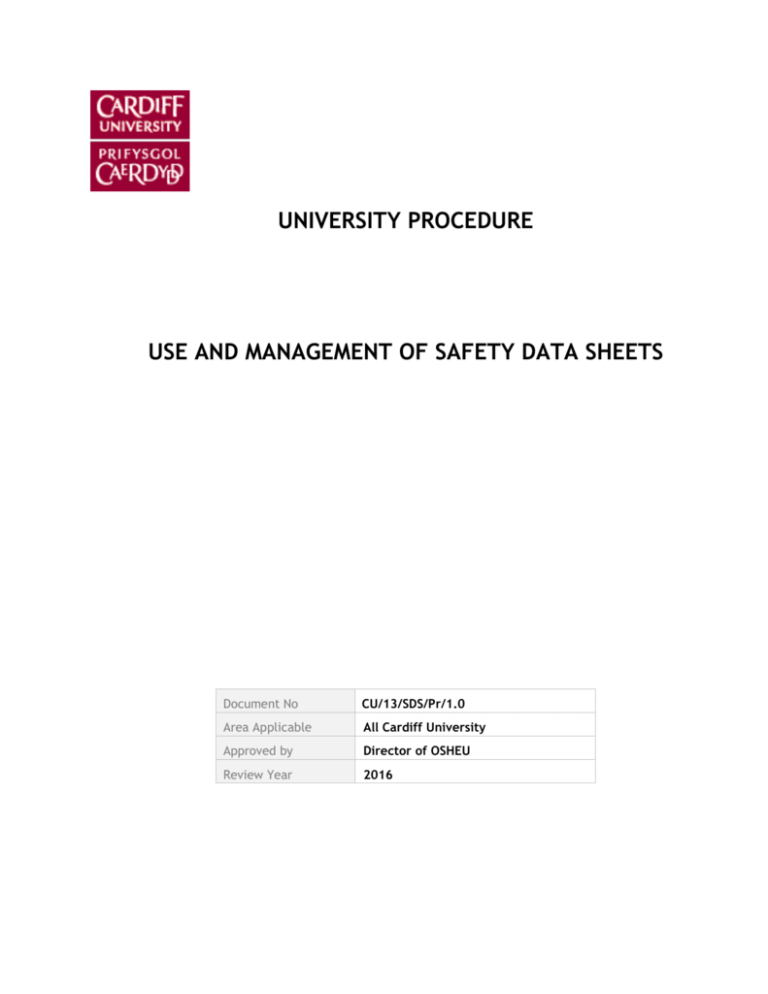
UNIVERSITY PROCEDURE USE AND MANAGEMENT OF SAFETY DATA SHEETS Document No CU/13/SDS/Pr/1.0 Area Applicable All Cardiff University Approved by Director of OSHEU Review Year 2016 Document History Author(s) Mike Turner Consultation process Revision Number Date January 2013 OSHEU Amendment Name Approved by USE AND MANAGEMENT OF SAFETY DATA SHEETS I. PURPOSE: The hazards associated with substances can change in line with new information and this will be reflected in the guidance issued under Registration, Evaluation, Authorization and restriction of Chemicals regulation (REACH) for each substance; this information is contained within the substance Safety, Data Sheet (SDS). It is essential, therefore, that the University has a system for accessing relevant, up to date information regarding the hazards, use, emergency preparedness and storage of substances. In line with the requirements of Management of Health and Safety at Work Regulations, Control of Substances Harmful to Health Regulations and Dangerous Substances and Explosive Atmosphere Regulations. II. SCOPE : This should be considered as the minimum standard which is expected by the University in relation to the management and use of Safety Data Sheets. III. RESPONSIBILITY: It is the responsibility of the line manager / supervisor to ensure that personnel have sufficient relevant information to safely use and manage a substance. This is includes its safe handling, emergency preparedness and storage. IV. PROCEDURE: The link between the risk assessment for using a substance and the relevant SDS is critical as it is the information in the SDS which informs the risk assessment. The safety data sheet must be dated and contain information under the following headings: 1. Identification of the substance/mixture and of the company/undertaking; 2. Hazards identification; 3. Composition/information on ingredients; 4. First-aid measures; 5. Fire-fighting measures; 6. Accidental release measures; 7. Handling and storage; Document No. CU/13/SDS/Pr/1.0 1 8. Exposure controls/personal protection; 9. Physical and chemical properties; 10. Stability and reactivity; 11. Toxicological information; 12. Ecological information; 13. Disposal considerations; 14. Transport information; 15. Regulatory information; 16. Other information. (Ref: http://www.hse.gov.uk/reach/resources/reachsds.pdf) The SDS for a substance should be provided free-of-charge, on paper or electronically, e.g. by postal delivery, fax or email and although there is no statutory review period for revising a SDS it will be updated when: • As soon as new hazard information or information that may affect the risk management measures becomes available; or • When a substance or mixture is classified according to the CLP Regulation (see Additional Information) • Once an authorisation under REACH is granted or refused; or (see Additional Information) • Once a restriction under REACH has been imposed. When a SDS is updated, the new dated version of the SDS, identified as ‘Revision: date’, shall be supplied to all users (of the substance/mixture in question) from the preceding 12 months. Therefore, the expectation is that Schools and Professional Services have systems for ensuring that up to date safety data sheets are maintained and distributed to the relevant staff in order that they can carry a suitable and sufficient risk assessment with corresponding control measures V. ADDITIONAL INFORMATION: CLP Regulation http://www.hse.gov.uk/coshh/detail/coshh-clp-reach.htm Document No. CU/13/SDS/Pr/1.0 2 Management of Health and Safety at Work Regulations http://www.hse.gov.uk/pubns/priced/l21.pdf Control of Substances Hazardous to Health Regulations http://www.hse.gov.uk/coshh/basics.htm Dangerous Substances and Explosive Atmospheres Regulation http://www.hse.gov.uk/fireandexplosion/dsear-background.htm Registration, Evaluation, Authorization and restriction of Chemicals regulation (REACH) http://www.hse.gov.uk/reach/about.htm Document No. CU/13/SDS/Pr/1.0 3

